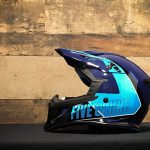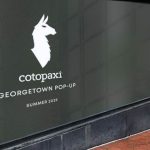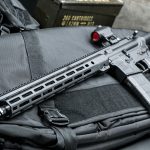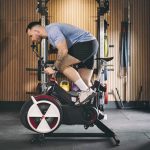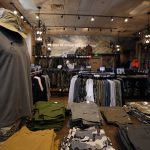Puma AG reported currency-adjusted sales rose 14.1 percent in the second quarter, highlighted by a 16.9 percent gain in the Americas. Earnings were pressured by higher input costs as well as brand investments but the company still expects profits to rise in the mid-single-digits for the full year.
In the quarter, consolidated sales rose 9.4 percent in euro terms to €673.5 million ($969 mm). On a global brand sales, which also include licensee sales, revenues advanced 9.9 percent, or 14.4 percent in currency-adjusted terms, to €709 million ($1.02 bn).
Footwear revenues in the quarter rose 16.2 percent currency-adjusted to €352.6 million ($507 mm), supported by particular strength in lightweight running shoes led by the Faas collection, Puma’s management said on a conference call with analysts. Apparel revenues climbed 10.7 percent to €224.3 million ($323 mm). The apparel gain was particularly notable since it came on top of 2010’s World Cup, which bolstered the team apparel category significantly. Accessories again posted a strong 15.0 percent increase to €96.7 million ($139 mm), including sales from Cobra Golf acquired in March 2010. Management said Cobra Puma Golf is benefiting from synergies.
Sales in the Americas grew 16.9 percent currency-adjusted to €226 million ($325 mm). Results in the region were “again underpinned by stellar performance in Latin America, where sales continue to accelerate,” said Michael Laemmermann, general manager, finance, on the call. “Nearly every country in the region returned double-digit growth.”
Franz Koch, who officially took over as Puma’s CEO last week with the transformation of Puma into a European Corporation, added that Puma has further upside in Latin America since the brand is much less penetrated in Brazil than other countries in the area.
As reported, Koch, whose appointment was announced back in March, replaces Jochen Zeitz, who had been in charge of Puma for the past 18 years. Koch was previously head of global strategy at Puma. Zeitz becomes chairman of the administrative board of Puma SE and will lead the new Sport & Lifestyle Division set up by parent PPR. The unit has so far acquired Volcom.
Asked by an analyst on the call about the U.S., Koch described the company as “satisfied” with the country’s performance.
“The outlook remains challenging, and that has to do with the fast-turning market in the U.S., especially in athletic specialty,” said Koch.
Elaborating, Koch said as the U.S. athletic market shifts from what he termed “visual technology into more lightweight running styles,” Puma’s Faas platform serving that need has generated “very positive market growth.” However, Koch added that “competition is fierce in that space, and competition is also overspending on marketing. And here we just need to keep a close eye on what we need to do in the near-term future in order to be truly competitive in product and marketing in that respect.”
At the same time, Puma’s lifestyle product side in the U.S. is benefiting from strong positions at key fashion accounts. Said Koch of the lifestyle segment, “This is a category that is working well for us more recently. And I guess this will also be an area where we can significantly improve our business since we have a clean platform in the US, and very clean inventory levels as well.”
Sales in EMEA grew 9.2 percent currency-adjusted to €290 million ($417 mm), with particularly strong performances in Eastern and Northern Europe. Womens Fitness (Bodytrain) increased at double-digit rates in the region. Said Laemmermann, “Were especially pleased by our performance in Russia, which is delivering excellent results, and Spain, where we opened our new subsidiary in the second quarter of last year.”
Asia/Pacific posted a gain of 20.1 percent currency-adjusted to €158 million ($227 mm), as sales in Japan recovered much faster than anticipated in the aftermath of the earthquake disaster, posting double-digit growth. Nearly every country saw double-digit growth. Pumas Lifestyle (Puma Social), Running (Faas and lightweight gear) and Fitness (Bodytrain) categories drove the overall growth in the region.
The gross profit margin rate in the quarter was a “very respectable” 49.1 percent of sales said management, though down from 50.6 percent in Q2 last year due to higher commodity prices, Asian wage increases and negative currency impacts from hedging positions during the quarter.
The Footwear segment had a gross profit margin of 48.1 percent of sales, down from 50.7 percent in Q2 last year. Apparel GM stood at 48.9 percent of sales, down from 52.1 percent in the year-ago period. Both segments were impacted by slightly higher sourcing costs as well as negative currency impacts from hedging. Accessories gross margins were at 53.3 percent of sales, a sharp jump from 46.3 percent due to last years Cobra Golf takeover.
On the call, Koch said that while cotton prices have normalized recently, management still sees ongoing margin pressures through the first half of 2012. Puma will start selective price increases of up to 10 percent in the fourth quarter and that will continue in Q1 next year.
Operating expenses rose 10.3 percent to €279.9 million ($403 mm) and slightly increased as a percentage of sales from 41.2 percent to 41.6 percent. Expenses grew due to investments outlined in its 5-year growth plan and the consolidation of Cobra Golf and Puma Spain.
Operating earnings before a special charge of €8.9 million in the year-ago quarter were down 11.5 percent to €55.4 million ($79.8 million.) Including the charge, operating profits grew 3.3 percent to €55.4 million ($80 mm). Benefiting partly by a lower tax rate, net earnings increased 10.6 percent to €37.6 million ($54 mm).
Looking ahead, Puma said it continues to target the €3 billion sales mark for the full year, reflecting sales growth at the same pace as seen in H1. Earnings are expected to rise in the mid-single-digit range on flat gross margins.


